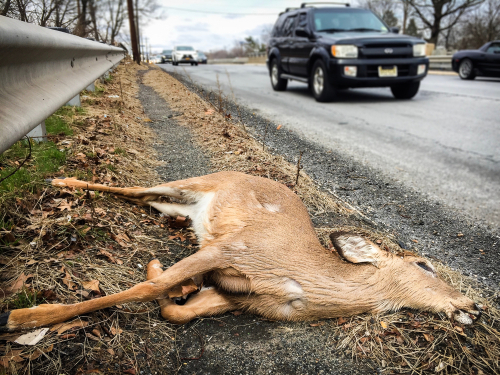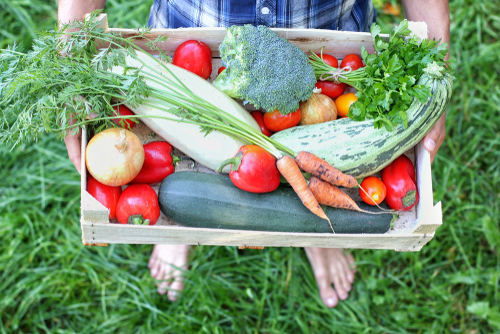This article could ruffle a feather or two.
https://www.survivopedia.com/7-shtf-food-sources-you-didnt-think-about/
https://www.survivopedia.com/7-shtf-food-sources-you-didnt-think-about/
7 SHTF Food Sources You Didn’t Think About

By
Bill White
October 15, 2019
It’s widely accepted that any TEOTWAWKI event is going to cause massive food shortages.
For that matter, we don’t even need such a major catastrophe to cause food shortages. Food shortages seem to follow major regional events too, like Hurricane Katrina, Hurricane Sandy, Hurricane Harvey in Houston and especially after Hurricane Maria plastered Puerto Rico.
Preppers handle this by stockpiling food, among other things. Even so, any food stockpile is limited and will eventually run out. What do you do when that happens? How can you continue to survive, without an adequate source of food?
Many in the prepping and survival community have decided that becoming self-sufficient is the answer to that question, starting vegetable gardens so that they can grow their own food. That’s great, but I wonder just how much food they’ll actually get out of those gardens. Is it going to be enough to survive on? I don’t think so.
You’ve probably seen an article sometime about someone who is growing all their own food in their backyard. I’ve seen several of them. In every case, they were using every square foot of space to the max, in order to grow enough to eat. Yet I have never seen a survival garden that was that extensive; not even close. How much food do these preppers really expect to get from their gardens and how long do they expect to live on it?
The other option that many people talk about is hunting. As with gardening, I think it’s a great idea. But at the same time, I wonder just how thoroughly they’ve thought that through. Without gas for their pickup truck, just where do these people plan on going hunting? What are they planning on going hunting for; their neighbor’s cat?
Few of us actually live close enough to good hunting grounds that we can count on hunting as a real source of food. The last time I went hunting it was about an hour and a half drive and that’s probably the closest I’ve ever lived to a good hunting area my whole life.
Driving to a good hunting area is just the first part of the problem. Assuming you get there and manage to kill anything for your family to eat, how are you going to get it back home? Without a running vehicle, that’s going to be an even bigger challenge. You’ll literally have to process and preserve the meat there, so that it doesn’t go bad on the trip home.
This got me thinking; since most “survival gardens” aren’t big enough, most of us aren’t raising enough animals to feed our families and going hunting is going to be a major logistical problem, what can we do to feed ourselves, when the supply chains break down?
Edible Wild Plants
The easiest and most commonly forgotten source of additional food is edible wild plants. Surprisingly, many of the best of these are considered weeds which grow just about anywhere. That makes them extremely easy to find and helps to ensure a steady supply of them.
Unfortunately, few of us can name any of these plants, let alone recognize them when we encounter them. Nor do we have much of an idea of what to do with them if we find them. Are they eaten raw? How should they be cooked? What parts are edible?
All it takes to answer these questions is to buy a book on edible plants. But I ask you, how many have one of those in their survival library? I’d be willing to guess that not many do, meaning that this abundant food source will most likely be ignored until people get so desperate that they’re willing to try eating something poisonous, just to get something in their bellies.
Road Kill
Okay, maybe eating something that was hit by a car doesn’t sound all that appetizing; but, so what? Think about it a moment. Road kill are animals that were killed by being hit by a car. Granted, that car is a lot bigger than a bullet, but the end result is about the same, a dead animal; often one that people go to considerable expense and trouble to hunt.
Granted, a squashed cat on the road probably isn’t going to be edible. Like other small animals, chances are pretty good that the guts were ruptured by the accident. So unless the meat is cooked very well, in order to kill the bacteria that spilled out of the animal’s guts, eating it could be extremely dangerous.
Likewise, eating any road kill that has been sitting on the road or beside the road for very long isn’t a good idea. All meat has bacteria and other parasites in it. The longer that the animal has laid there dead, the more these parasites would have spread through the muscle tissue, rendering it dangerous to eat. Once again, thorough cooking can make it safe to eat, even though the flavor might be severely affected.
On the other hand, my brother hit a mule deer in Colorado a couple of years ago. Those muleys are big and they do a lot of damage when you hit them. His insurance company ended up totaling his car, which was only a few years old. So both the car and the deer ended up totaled by that one. My brother was fined for the accident and for killing a deer without a license; but strangely enough, he was allowed to keep the deer. I guess that was supposed to be compensation for his lost car.
Part of the meat was severely damaged by that accident, specifically the part that was crushed by coming into contact with the car. Bruising of the muscle tissue meant that there was a lot of blood in the meat, making it inedible. Likewise, the meat located next to the guts was suspect. But he still got over 50 pounds of meat from that deer, helping to make up for his loss.
Of course, without cars and trucks on the road, there isn’t going to be much road kill around to eat.




















































